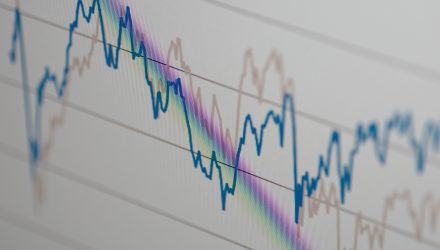Inverted yield curves have been giving investors fits in the U.S. with market volatility and lower Treasury yields. In Europe, however, these market movements in U.S. government debt are sparking ideas for new exchange-traded funds (ETFs) with European firm Lyxor ETF launching four yield curve ETFs.
Per a press release:
Each of the four new ETFs – which the company says are the first of their kind in Europe – is designed to help investors express their views on expected changes in the shape of the US Treasury and German Bund yield curves, two key benchmarks for interest rates.
Against the backdrop of increasing global economic uncertainty and with all eyes on future central bank action, the new funds provide investors with innovative tools to take a stance on crucial drivers of financial markets.
Due to the high multiplier effect of these funds, they are aimed at professional investors with good knowledge and experience of financial markets, and best held for short to medium term periods.
The Lyxor US Curve Steepening 2-10 UCITS ETF, already listed on the London Stock Exchange at the beginning of August, allows investors to potentially profit from an increase in the yield differential between 2Y and 10Y US Treasuries, known as a ‘steepening’ of the yield curve, within a simple and transparent ETF vehicle. Government bond yield curves tend to steepen at a time when markets anticipate increased monetary policy support from central banks.
Lyxor’s other new ETFs allow investors to express the opposing view – that the 2-10Y portion of the US Treasury yield curve will flatten, via the Lyxor US Curve Flattening 2-10 UCITS ETF – as well as gain equivalent exposures to the 2-10Y portion of the German Bund yield curve via the Lyxor EUR Curve Steepening 2-10 UCITS ETF and the Lyxor EUR Curve Flattening 2-10 UCITS ETF. All four ETFs come with an annual management fee (Total Expense Ratio) of 0.30 per cent.
The funds track Solactive indices built using long/short positions in bond futures with a seven-times multiplier. For every one basis point steepening of the yield curve in question, the associated steepening index is expected to increase by approximately 7bps, while for every one basis point flattening of the yield curve in question, the associated flattening index is designed to rise by 7bps. Factors such as cash drag, compounding effects from daily leverage, and/or futures roll costs may however affect the target multiplier of seven.
Philippe Baché, Head of Fixed Income ETFs at Lyxo, saysr: “Our priority is making sure that investors have all the tools they need to invest in these ever-changing markets. Views on the direction of interest rates differ among investors, and our innovative ETFs allow them to express their beliefs on the future shape of benchmark yield curve.”
Click here to read the full report.
